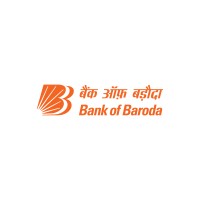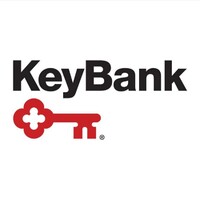Company Cyber Security Posture
NANA
NA Company Details
NA
NA
NA
NA
NA
NA
Scan still pending
NA
NA
Between 200 and 800
This score is AI-generated and less favored by cyber insurers, who prefer the TPRM score.
 NA Global Score
NA Global Score.png)

Company Scoring based on AI Models
| Model Name | Date | Description | Current Score Difference | Score |
|---|---|---|---|---|
| AVERAGE-Industry | 03-12-2025 | This score represents the average cybersecurity rating of companies already scanned within the same industry. It provides a benchmark to compare an individual company's security posture against its industry peers. | N/A | Between 200 and 800 |
Company Cyber Security News & History
| Entity | Type | Severity | Impact | Seen | Url ID | Details | View |
|---|
Company Subsidiaries

NA
Access Data Using Our API

Get company history
.png)
NA Cyber Security News
Cyber Safety Company Gen Digital Acquires MoneyLion for $1 Billion
Gen's purchase of MoneyLion is notable because it is unique. It may be the first time a fraud and security firm has acquired a digital bank– ...
Liongard Advances Proactive Cybersecurity with Acquisition of Darklight’s AI-Powered Vulnerability Prioritization Platform
HOUSTON, June 06, 2025--Liongard Strengthens Cyber Risk Intelligence with Acquisition of AI-Powered Vulnerability Platform from Darklight.
Gen Completes Acquisition of MoneyLion, Accelerating the Company's Leadership in Financial Wellness
Gen (NASDAQ: GEN) is a global company dedicated to powering Digital Freedom through its trusted consumer brands including Norton, Avast, ...
Gen Digital to acquire MoneyLion in $1B deal
Gen, the global parent firm of cyber safety brands Norton and Avast, will pay $82 per share in cash to add the consumer finance fintech to its roster.
BOG signs a EUR 50 million loan agreement with EIB – Company Announcement
EQS-PVR: Daimler Truck Holding AG: Release according to Article 40, Section 1 of the WpHG [the German Securities Trading Act] with the objective ...
BOGG PLC announces changes in management team
EQS-PVR: Daimler Truck Holding AG: Release according to Article 40, Section 1 of the WpHG [the German Securities Trading Act] with the objective ...
Proposed acquisition of Ameriabank CJSC – Company Announcement
EQS-PVR: Daimler Truck Holding AG: Release according to Article 40, Section 1 of the WpHG [the German Securities Trading Act] with the objective ...

NA Similar Companies

Bank of Baroda
Founded in 1908 by Maharaja Sir Sayaji Rao Gaekwad III, Bank of Baroda is a top notch Public Sector Bank with a business of around Rs.10 trillion and network of 8100+ branches of which 105 overseas branches / offices are located in 17 countries excluding India spanning across Europe, US, Africa, As

National Bank of Canada
At National Bank, we believe in the potential of each individual, and that even the smallest gestures can make a big difference. When we help others accomplish their projects, we help empower them and the community at large. We try to make a difference through innovation, but above all, by puttin

KeyBank
At KeyBank we’ve made a promise to our clients that they will always have a champion in us. To deliver on our promise, we’re committed to building a team of engaged employees who do the right thing for our clients and shareholders, and help them achieve financial wellness each and every day. Headqu

Crédit Agricole Italia
Crédit Agricole Italia fa parte del grande Gruppo internazionale Crédit Agricole: un gruppo bancario tra i più solidi nel panorama internazionale e presente in 46 Paesi del mondo, con 53 milioni di Clienti. Il Gruppo Crédit Agricole in Italia conta 6 milioni di Clienti attivi e circa 16.200 collabor

Abbey
Abbey National plc is the 6th biggest UK bank with 705 branches under the Abbey brand. It also uses the Cahoot and since September 2008, the Bradford and Bingley savings brands. Subsidiary banks include Cater Allen Limited. Since 2004 Abbey has been part of the Santander group. Santander is the larg

Janalakshmi Financial Services
Jana Small Finance Bank’s vision is to be the leading digitized bank serving all customer segments and communities of an aspirational India. The bank commenced operations on 28, March 2018. In 2017, Jana was also featured in ‘Fortune - The Top 500’ largest corporations in India and was recently aw

Frequently Asked Questions
Explore insights on cybersecurity incidents, risk posture, and Rankiteo's assessments.
NA CyberSecurity History Information
How many cyber incidents has NA faced?
Total Incidents: According to Rankiteo, NA has faced 0 incidents in the past.
What types of cybersecurity incidents have occurred at NA?
Incident Types: The types of cybersecurity incidents that have occurred include .
Additional Questions
What Do We Measure?
















Every week, Rankiteo analyzes billions of signals to give organizations a sharper, faster view of emerging risks. With deeper, more actionable intelligence at their fingertips, security teams can outpace threat actors, respond instantly to Zero-Day attacks, and dramatically shrink their risk exposure window.
These are some of the factors we use to calculate the overall score:
Identify exposed access points, detect misconfigured SSL certificates, and uncover vulnerabilities across the network infrastructure.
Gain visibility into the software components used within an organization to detect vulnerabilities, manage risk, and ensure supply chain security.
Monitor and manage all IT assets and their configurations to ensure accurate, real-time visibility across the company's technology environment.
Leverage real-time insights on active threats, malware campaigns, and emerging vulnerabilities to proactively defend against evolving cyberattacks.




